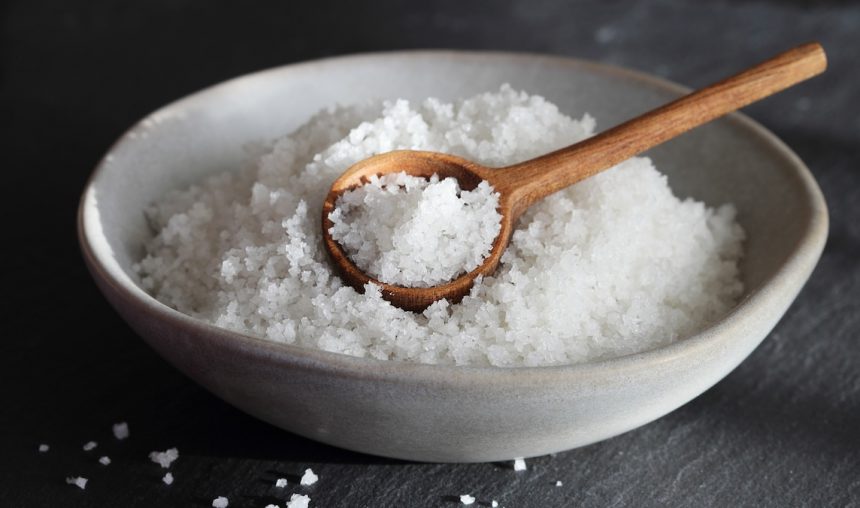Experts In This Article
- Katherine Brooking, MS, RD , dietitian, speaker, nutrition counselor, author, influencer and nutrition advocate
- Lauren Fleck, RD, functional dietitian and speaker based in Hudson, WI
What is Celtic sea salt, and is it the same as Celtic salt?
Celtic (pronounced “Keltic”) Sea Salt is a brand that produces Celtic salt, a specific type of sea salt. Originally sourced from the coastal regions of France, Celtic salt is made by evaporating seawater, leaving behind the mineral-rich salt. Celtic salt is also known as “gray salt” (or sel gris, in French), and it gets its unique color from the minerals found in the clay beds where it’s harvested. Like all salt, Celtic sea salt is mostly sodium chloride (NaCl), says Katherine Brooking, RD, a dietitian and author. Specifically, Celtic sea salt is about 85 percent sodium—and the rest of it is made up of trace minerals, including calcium, magnesium, and potassium.
Related Stories
Celtic sea salt compared to other salts
Sea salt vs. Celtic sea salt
Celtic sea salt is a type of sea salt (but not all sea salt is Celtic). Both Celtic sea salt and traditional sea salt are made by evaporating seawater. Unlike regular sea salt, which is white, Celtic sea salt is gray and may contain a different mineral content from the clay beds it’s harvested from. Celtic sea salt, and all types of sea salt, are made up of large, flaky crystals.
Iodized table salt vs. Celtic sea salt
Iodized salt is a type of table salt that’s fortified with iodine. Table salt is mined from salt deposits and then processed into a fine texture, a process that removes the small amounts of minerals naturally found in salt, according to the American Heart Association (AHA). After it’s processed, “table salt is then fortified with additives to prevent it from clumping together,” Brooking says. Iodine, a mineral important for thyroid health, is added to iodized salt. However, Celtic sea salt does not contain iodine. Celtic sea salt grains are larger than regular table salt.
Himalayan pink salt vs. Celtic sea salt
Himalayan pink salt is mined in Pakistan, by the Himalayan mountains. Himalayan pink salt’s higher iron content gives it its signature rosy hue. Like other types of sea salt, including Celtic, Himalayan salt is made up of large, coarse crystals. Himalayan salt also has an earthier taste than Celtic sea salt.
Redmond’s Real Salt vs. Celtic sea salt
Redmond’s Real Salt is an unprocessed salt that comes from seabeds in Utah. This natural sea salt has more iron than Celtic sea salt, and the higher iron content contributes to Redmond’s Real Salt’s light pink color. However, Redmond’s Real Salt may be lower in magnesium and potassium than Celtic sea salt; still, the differences are incredibly minimal.
Kosher salt vs. Celtic sea salt
Kosher salt is another large-crystal salt. Kosher salt undergoes processing, which strips it of any trace minerals it contains. It’s usually not iodized. Celtic sea salt nutritional facts
Celtic sea salt nutritional facts
A 1/4 teaspoon (the standard serving size) of Celtic Sea Salt contains:
- 0 calories
- 0 g of fat
- 480 mg of sodium (20% DV)
- 0 g carbohydrates
- 0 g protein
The Celtic Sea Salt website doesn’t list the amounts of minerals besides sodium present in the salt, so we don’t know the magnesium, potassium, calcium, and iron content in milligrams.
Celtic sea salt benefits
Most of the purported benefits specific to Celtic sea salt are unsubstantiated by research. Celtic sea salt doesn’t offer any unique benefits that regular salt doesn’t also provide; however, it does contain trace minerals and has a distinct flavor that some people prefer. Still, the trace minerals like magnesium and calcium found in Celtic sea salt are present in very small amounts, Brooking says. “These minerals aren’t abundant enough to support many of the health claims of Celtic sea salt.”
Let’s break down some of the potential benefits of Celtic sea salt:
- It can help with hydration if you’re dehydrated
- It might support skin health
Potential problems with using Celtic sea salt
- It may contribute to a higher sodium intake
- It’s not iodized
- It might contain microplastics






